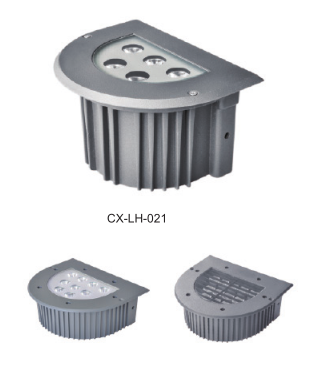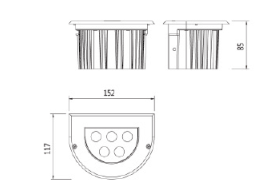LED lighting power supply and drive options In LED lighting design , there are two general driving schemes: linear drive and switch drive. The linear drive application is one of the simplest and most direct drive applications. In the illumination-level white LED application, although there are problems such as low efficiency and poor adjustability, due to its simple circuit and small size, it can be used in some specific occasions. The switch-type drive can obtain good current control accuracy and high overall efficiency. The application methods are mainly divided into two types: buck and boost. The buck switch driver is for applications where the supply voltage is higher than the terminal voltage of the LED or when multiple LEDs are driven in parallel. The boost switch drive is for applications where the supply voltage is lower than the terminal voltage of the LED or when multiple LEDs are driven in series. It is generally believed that isolated drives are safe but less efficient, and non-isolated drives are more efficient and should be selected according to actual requirements. The current basic LED driver lighting application is relatively simple to design, but if other functions such as phase control dimming and power factor correction (PFC) are required, the design becomes complicated. Non-dimming LED drivers without power factor correction typically include an off-line switching power supply for regulating output at constant current. The back-end architecture of the LED driver includes a current regulation circuit with short-circuit protection. This can be done with a linear regulation circuit, however, this method is inherently inefficient and therefore suitable for low output currents and is typically not applied to multi-level architectures. An alternative is to use a simple buck regulator circuit with current feedback to limit the output current to exceed the desired LED drive current. It offsets the total LED forward voltage as a function of temperature and device tolerance, and limits the current in the event of a short or other fault condition, thereby protecting the drive from damage. Working principle diagram E27 3.5W LED bulb driver solution: Solution main chip: STMicro model ALTAIR03TR (SO16 chip package) Quasi-resonant mode of operation chip, high integration and high reliability. The main parameters are as follows ·Input voltage: AC90~264V, 50/60Hz · Power factor: > 0.5 · Average efficiency: > 75% · Output constant voltage / constant current: DC10.2V, 350mA +/- 5% · LED combination: 1W x 3 in series ·Features: Built-in 700V MOSFET, less component count, cost-effective.
Led Underground Lamp is a new type of buried decoration lamp with high brightness LED as the light source and LED constant current drive as the driving mode.Widely used in square, park, leisure places, such as outdoor lighting, outdoor as well as park, square, garden greening, lawn, flower beds, pedestrian street, waterfalls, fountains, water etc illumination, add luster for life.
Product size
Technical parameters
Main material
High - pressure cast aluminum, 92% high - light steel screen printing glass
The light colored temperature
Red/Green/Yellow/Amber/Vermilion/Acid blue/3000K/4000K/5000K/6000K
Surface treatment
UV Polyester powder coating
Light distribution device
Reflector lamp cup series:6°
Optical lens series:8°/15°/25°/45°/10×30°/10×60°/20×40°
The light body color
Dark grey
Working voltage
DC24V
Safeguard procedures
Silica gel ring compacted waterproof
way to install
Embedded part
Average lifetime
350mA20000hours,500mA15000hours
rated power
/
Control mode
/
Level of protection
IP65
operating ambient temperature
-25℃~50℃
Working environment humidity
10%~90%
Led Underground Lamp ,Led Underground Headlamp,Led Cap Lamp Underground Mining,Underground Led Cap Lamps Jiangsu chengxu Electric Group Co., Ltd , https://www.satislighting.com
